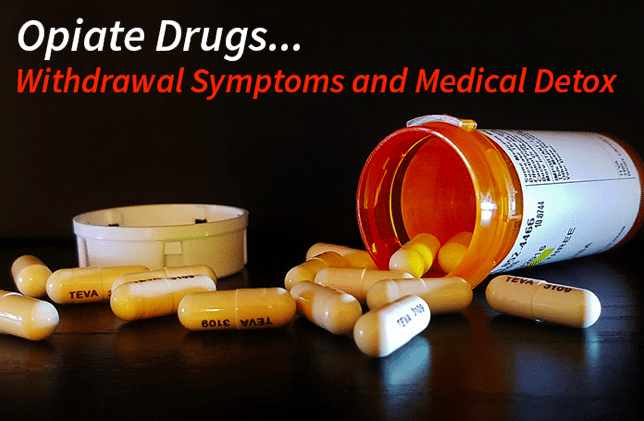Prescription opiate drugs and heroin have become an epidemic problem with drug addiction. Opioid overdose deaths are rampant with 20,101 prescription pain reliever overdose deaths and 12,990 overdose deaths related to heroin in 2015.
Opioids are drugs prescribed for pain relief by a doctor. These drugs provide many people the needed relief from pain when taken in the manner and dosage prescribed by a doctor. However, these pain relief drugs can also be taken to get a “high effect” and can be highly addictive. Many  people don’t realize they are addicted to opiate drugs until it is too late.
people don’t realize they are addicted to opiate drugs until it is too late.
What are some of the more common opiate drugs?
CODEINE – is a weaker prescription opiate. It is prescribed for mild to moderate pain and is also found in cough medicine.
MORPHINE – is prescribed as a potent pain reliever. It is used in clinical pain management, especially for terminal cancer patients and post-surgery pain. It is potentially highly addictive.
HYDROCODONE – Most common known brand name is VICODIN. Prescribed for moderate to severe pain and is abused more than any other opiate in the US.
OXYCODONE – Most common brand name OXYCONTIN. The purest form, used for severe pain, and his highly addictive.
FENTANYL – is a powerful synthetic opioid prescription drug, similar to morphine, but is 50 to 100 times potent. It produces a powerful high.
HEROIN – is a non-prescription illegal opioid drug that many turn to after being addicted to the prescription opioids because heroin is cheaper to get.
Opiate Withdrawal Symptoms
Withdrawal symptoms from opiate drugs can start a few hours after the last dose. Early withdrawal symptoms can be sweating, insomnia, runny nose, achy muscles, tearing up, excessive yawning, and anxiety or agitation. Once the initial symptoms have passed, those who have an abuse or addiction history with the drug will experience more severe symptoms as the detox process will begin and last for up to a week or longer. The symptoms experienced may be nausea and vomiting, diarrhea, goosebumps, stomach cramps, depression, and drug cravings.
Detox Options
Opiate drug withdrawal symptoms can be very uncomfortable. Some individuals choose to detox at home and others want the detox process to happen in a facility with trained staff members. It can be extremely difficult to stop taking opiate drugs without help and medical detox may provide the safest way to detox. Vital signs, such as blood pressure, heart rate, body temperature, etc, can be monitored regularly and medications can be administered to regulate the brain and physical symptoms can be stabilized. Therefore, This gives you a good start to your recovery and may make relapse less likely. Medical detox is usually short in duration lasting 7 days at New Day Recovery.
At New Day Recovery, you will be given close monitoring by medical and mental health specialists in a safe, comfortable environment. Your stay with us will be completely confidential. Call us today at (330)-953-3300.




